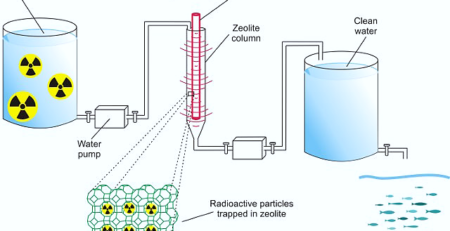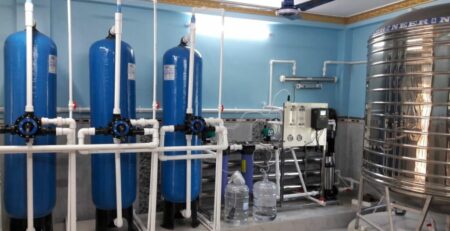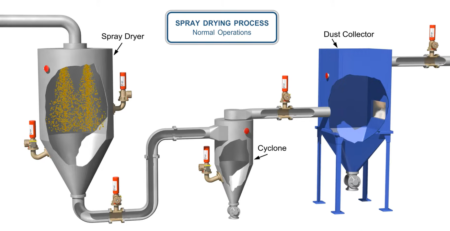Heavy Metal Removal from Mining Dam, Mining Pit Wastewater
Introduction
Toxic, long-lasting, and capable of bioaccumulation in living organism tissues, heavy metals emerge as the most troublesome mining effluent contaminants. When not handled correctly, metals like lead, arsenic, mercury, and cadmium may wreak havoc on ecosystems and human health. Consequently, in order to safeguard ecosystems and human health, it is necessary to appropriately remove these pollutants from wastewater from mining dams and pits.
Sources of Heavy Metals in Mining Wastewater
Most of the heavy metals in mine runoff originate in the mined material itself. After being extracted and processed, metals can dissolve in water. In this instance, the tailings, which are the leftovers from mining operations and are kept in pits or dams, are another important source of pollution. This could contaminate the area when it comes into touch with water because it dissolves metals.

Techniques for Heavy Metal Removal
Physical, chemical, and biological processes are the three main categories into which the numerous heavy metal removal methods employed in mining dam and pit wastewater fall.
-
Physical Processes
- Adsorption
This is the method by which a solid substance, called an adsorbent, has metal ions bound to its surface. Biochar, activated carbon, and zeolites are common adsorbents. The versatility and efficacy of adsorption make it a popular method for removing a wide range of metals. - Membrane Filtration
Wastewater containing dissolved metals can be removed using certain nanofiltration and reverse osmosis methods. Despite the high cost and frequent upkeep required, these solutions are effective. - Electrocoagulation
The electrochemical process destabilises the metal ions, causing them to agglomerate into bigger particles. These particles can subsequently be removed by sedimentation or filtration.
- Adsorption
-
Chemical Processes
- Chemical PrecipitationHeavy metals are rendered insoluble and subsequently precipitate out of solution when reagents like hydroxides, lime, or sulphides are added to wastewater. Lead and copper are the most common metals treated in this way.
- Ion ExchangeA resin ion exchanger is used to effectively remove metals from wastewater by exchanging ions with wastewater ions. Metals like zinc and cadmium would be particularly affected by this.
- FlotationThe procedure involves pumping air bubbles into the wastewater, which then bind to the metal ions and cause them to rise to the surface, much like froth flotation. Then, to proceed with the processing, just skim off the foam that contains metals.
-
Biological Processes
- Biosorption
To remove heavy metals from wastewater, either in their pure form or as part of an aqueous solution, one can utilise natural or biological adsorbents such as algae, bacteria, fungi, and others. For the removal of metals in low quantities, this technique is ideal because it is both environmentally safe and considerably less expensive. - Phytoremediation
Water hyacinth and duckweed are examples of plants that may absorb and store heavy metals from wastewater; these plants are capable of phytoremediation. Heavy metals like mercury and arsenic can accumulate in these plants. - Microbial Reduction
To aid in the removal of metals from wastewater, several bacteria can reduce metal ions to less harmful or insoluble forms. Toxic metal sulphates can be converted to insoluble metal sulphides by sulfate-reducing bacteria.
- Biosorption
The second part of sustainable mining is dealing with effluent from mining pits and dams. To reduce the environmental impact of mining, wastewater can be recycled along with the heavy metals extracted from it. Although there has been a lot of advancement, especially in terms of technology, the problems that have emerged thus far and the sustainability of mining operations in the long run can only be solved by constant investment and innovation.
Mining operations can be made more efficient and profitable with the help of heavy metal removal and wastewater recycling programmes that are good for both people and ecosystems. In order to balance economic and environmental concerns, it is essential that the industry adopts more modern treatment technologies and processes as it continues to expand.
Waterman Engineers Australia
Treatment issues in wastewater recycling and heavy metal removal are important topics of study in the pursuit of environmentally friendly mining activities. Businesses like Waterman Engineers Australia are at the forefront of developing ground-breaking answers to challenges of this complexity. When it comes to recycling wastewater from mining dams and pits and removing heavy metals from this effluent, Waterman Engineers Australia is the go-to expert.
 The mining sectors confront significant challenges, and Waterman Engineers Australia has developed solutions that incorporate cutting-edge technologies such as biosorption, membrane filtration, and chemical precipitation. To aid mining companies in reducing environmental footprints while preserving operational efficiency, their strategy takes into account both the resource recovery issue and the need for adequate wastewater treatment.
The mining sectors confront significant challenges, and Waterman Engineers Australia has developed solutions that incorporate cutting-edge technologies such as biosorption, membrane filtration, and chemical precipitation. To aid mining companies in reducing environmental footprints while preserving operational efficiency, their strategy takes into account both the resource recovery issue and the need for adequate wastewater treatment.
Waterman Engineers Australia may work with mining industries to provide services beginning with evaluation and design and continuing through implementation and ongoing support. They are the go-to partner for mining companies when it comes to responsible resource management and environmental protection because of their dedication to sustainability and innovation.
When it comes to the dynamic mining industry’s increasing embrace of sustainability, specialised firms like Waterman Engineers Australia will be pivotal. With their expertise in wastewater recycling and heavy metal removal, mining operations are prepared to tackle the obstacles posed by regulatory and environmental regulations that aim to make the business more sustainable.
FAQs
- What is mining dam and mining pit wastewater?
Contaminated wastewater from mining operations is known as mining dam wastewater or mining pit wastewater. Typically, it contains contaminants including heavy metals, compounds released during mineral processing, and suspended solids. Adequate recycling is necessary for the efficient management of this water due to its effects on the ecosystem and the saved freshwater. - Why is recycling mining wastewater important?
There would be less of a need for potable water, less wastewater to treat, and more resource recovery if mining effluent could be recycled. It ensures that mining operations use water sustainably and prevents degradation of the environment. - What technologies are used for recycling mining wastewater?
Chemical processes like coagulation and precipitation, physical processes like sedimentation and filtration, and biological processes like built wetlands and bioreactors are all utilised in mining wastewater recycling. The wastewater’s unique composition and treatment goals will dictate the best course of action. - How are heavy metals removed from mining wastewater?
Heavy metal removal techniques span the physical (adsorption, membrane filtration, etc.), chemical (precipitation, ion exchange, etc.), and biological (biosorption, phytoremediation, etc.) realms. The kind and amount of metals in the effluent will determine the procedure to be followed. - What are the environmental impacts of untreated mining wastewater?
Mining wastewater degrades land and aquatic life, contaminates surface and groundwater, and harms the ecosystem if not handled. As with other contaminants, heavy metals have a cumulative impact on ecosystems and human health as they make their way up the food chain. - What services does Waterman Engineers Australia offer for mining dam and mining pit wastewater recycling?
Waterman Engineers Australia provides a comprehensive service for recycling wastewater from mining dams and pits, beginning with conceptualization and ending with detailed design. They apply cutting-edge treatment technologies, such as chemical precipitation systems and membrane filtration, and also build wetland systems to manage and recycle wastewater effectively. - How does Waterman Engineers Australia handle heavy metal removal from mining wastewater?
Adsorption, chemical precipitation, and biosorption are some of the heavy metal removal procedures used by Waterman Engineers Australia. By utilising their expertise, heavy metals can be properly eliminated, ensuring compliance with regulations and environmental protection. - What makes Waterman Engineers Australia a reliable partner for mining wastewater management?
The wastewater management team at Waterman Engineers Australia has a stellar reputation. Mining firms may rely on them as a reliable partner for wastewater treatment process improvement because of their personalised solutions, innovative technologies, and dedication to sustainability. - Can Waterman Engineers Australia provide customized solutions for specific mining operations?
Waterman Engineers Australia does, in fact, provide individualised services to meet the specific requirements of the mining industry. Careful evaluations are carried out so that treatment systems may be developed and put into place to meet the unique demands of wastewater composition and environmental regulations. - How can mining companies get in touch with Waterman Engineers Australia for their services?
If your mining company is interested in learning more about the services offered by Waterman Engineers Australia, you can do so by visiting their website. To further discuss their needs and schedule a consultation, they may also reach out to the company directly using the given contact information.










